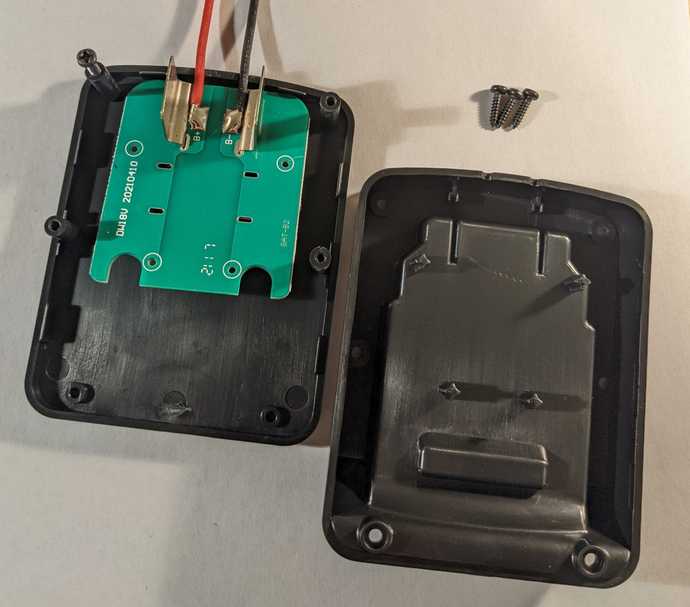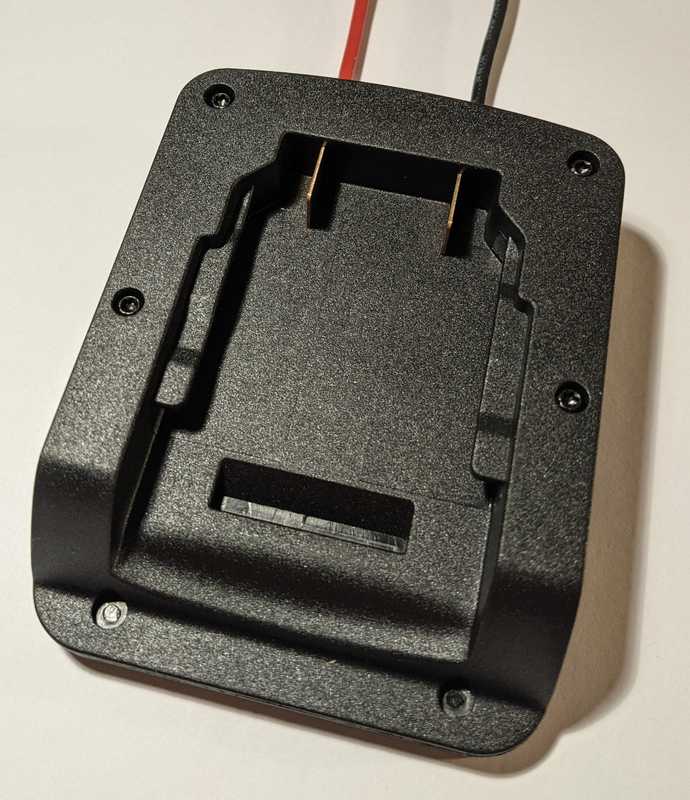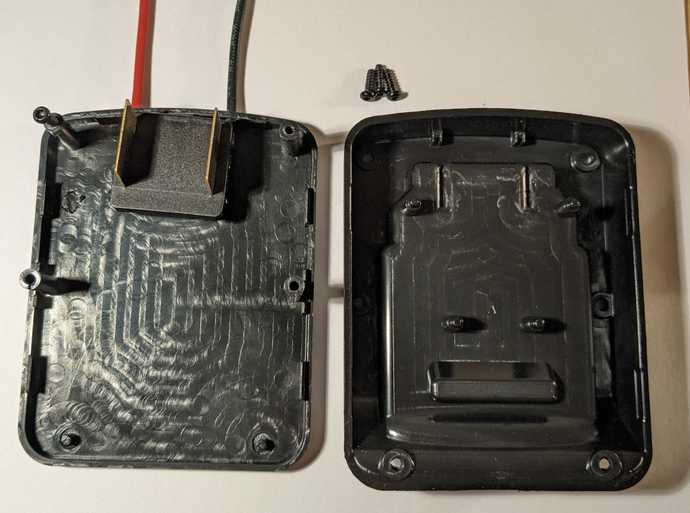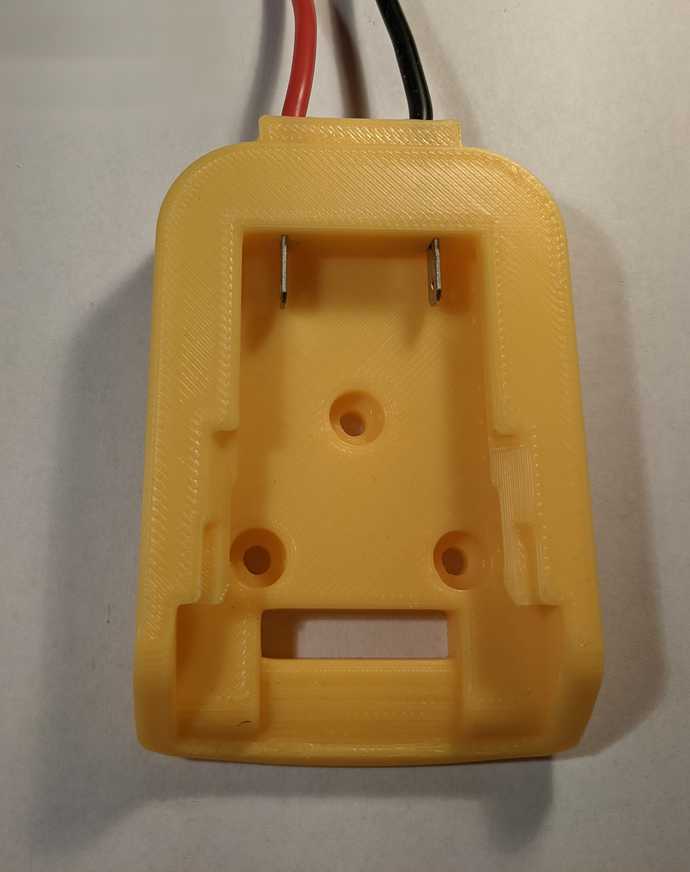DIY Adapters for DeWalt Batteries
While I don't intend to make this blog reviews-focused, some products have the potential to be foundational to a wide range of alternative DIY projects which I would like to help make more viable.
Many DIY projects require a simple reliable high-capacity power source. While dedicated or built-in batteries sometimes make sense, sourcing high-quality cells is often difficult. Also, as the number of such devices with dedicated batteries grows, so does the effort needed to keep them all charged on a semi-regular basis. As such, small tool batteries - like those for power tools by Makita, DeWalt, etc - make a compelling option. Here I will review 3 similar DeWalt adapters so other folks can hopefully just buy the one that best suites their project best.
There are probably at least a dozen of these adapters on Amazon, and even more listings on Ebay and AliExpress. I picked 2 of the ones with the most/best reviews and one that seemed to be newly listed but which claimed to have over current/voltage/charge/heating protection.
Since the adapters are so similar, I'll refer to them by the names Andy, Bart, and Curt.
- Andy: "Power Wheels Adaptor for dewalt 20V" https://www.amazon.com/dp/B09C5CXVDM
- $12.58 - 4.6 stars with 1,114 ratings and 82 reviews
- Bart: "Upgraded Battery Adapter for dewalt" https://www.amazon.com/dp/B08JLYPY4F
- $8.09 - 4.5 stars with 3 ratings and zero reviews
- Curt: "Battery Adapter for Dewalt 20V" https://www.amazon.com/dp/B08GWZ8LR6
- $10.58 - 4.6 stars with 498 ratings and 40 reviews
Breakdown
Andy
Pros
- Attaches to battery securely, detaches only when battery release button is pressed, and appears to be making a solid electrical connection with battery terminals
- Plastic and mechanical portion is sturdy and fits together cleanly
- Has a very simple "circuit board" inside to hold the contacts - this could be convenient for some kinds of mods
- Wires are very well soldered to board
- 200 C Fluorinated Ethylene Propylene (FEP) wire insulation
Cons
- No strain relief for wires
- Thin contacts
- Wire does not match description - actually is 14 awg not 12 awg
- Wire has a relatively low strand count and is pretty stiff - not ideal for applications which will experience frequent bending
- 3g over advertised weight of 70g
Bart
Pros
- Attaches to battery securely, detaches only when battery release button is pressed, and appears to be making a solid electrical connection with battery terminals
- Plastic and mechanical portion is sturdy and fits together cleanly
- Held together with nicer T9 screws compared with the philips screws found on Andy
- Slightly thicker contacts than Andy
- Right at advertised weight of 67g
- Actually has 12 gauge wire - as advertised
- Wires are directly soldered to the flat battery contacts - Could potentially increase overall ampacity
- 200 C Fluorinated Ethylene Propylene (FEP) wire insulation
- Has some internal space that could be used in some projects to house additional small electronics
Cons
- No strain relief for wires - though they do feed through small holes in a way that may provide some protection compared to Andy
- Product images falsely advertise the adapter as having "Multiple Protection" ("Over-current", "Overvoltage", "Over-Charge", and "Over-Heating"), but actually there is nothing in the adapter that would provide that
- Contacts are embedded in floating a piece of plastic and rely on the assembled case to capture them in the right position
- Wire has a relatively low strand count and is pretty stiff - not ideal for applications which will experience frequent bending
- I partially stripped two of the screws doing the investigation for this review - probably not really the fault of the adapter since they're not meant to be taken apart very many times
Curt
Pros
- Attaches to battery securely, detaches only when battery release button is pressed, and appears to be making a solid electrical connection with battery terminals
- Plastic and mechanical portion is sturdy and appears to be a single piece - not counting the contacts and wire
- Actually has 12 guage wire - as advertised
- Wire is a high strand count which should hold up better to frequent bending than the other adapters
- Wires are directly soldered to the flat battery contacts - Could potentially increase overall ampacity
- Wire insulation says 200 C and is nice and flexible/rubbery - might be silicone
- Has nice countersunk screw holes for attaching the adapter to things
- Lightest of the adapters at 56g
Cons
- No strain relief for wires
- Thin contacts - similar to those on Andy but a little more fragile due to their smaller size and reduced contact area with the case of the adapter
- Contacts are a little loose and could potentially pull out of the adapter
- Product images could be misleading since they contradict the description and suggest the adapter comes with 14 awg wire (it is actually 12 awg - see "pro" above)
- 6g over advertised weight of 50g
Other Take-aways
- None of these adapters have a means of low voltage discharge cutoff - and neither do the batteries - so that will need to be part of any projects that use these adapters.
- None of these adapters have connections for the other balance leads so they can't be (safely) used for charging.
- None of these adapters are suitable for rough applications due to the lack of strain relief and wiring that will stand up to abuse.
Conclusion
- Andy is nice if you plan to mod the adapter and put additional electronics inside - especially for low-current applications or if you plan to redo the wiring anyway
- Bart is probably the best value and likely has the highest continuous current carrying capacity
- Curt is probably the best for applications where weight matters or where the wire will experience frequent bending
Bottom line: For most projects I would probably pick Bart.





